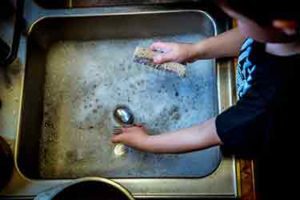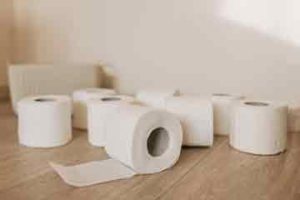
When you flush water through your toilet, sink, or bathtub, do you know where it goes? All that water has to go somewhere and where it goes is into your sewer lines. The sewer line transports all the wastewater from inside your home to the main sewer in the street. Follow this article on 7 sewer line maintenance tips to help guide you.
Like most features of the home that you don’t see or handle every day, sewer lines only get attention when they stop working. Sewer line maintenance rarely features in homeowner’s or landlord’s routine maintenance, says PinnaclePMC.com. But sewer line issues can be really unpleasant when they happen.
Imagine the horror of flushing your toilet after use, only for the bowl to fill up and spill its contents on the toilet floor. Or what do you do when bathwater refuses to drain out of the bathroom? These are the kinds of issues that happen when sewer lines stop functioning.
But they can be prevented with proper sewer line maintenance.
Common sewer line problems
The three most common issues you may have with your sewer lines are sags in the sewer lines, buildups, and tree root intrusion.
- Sagging sewer lines
This is when the sewer line develops a bend or low point along its length. It is a problem because liquid loses its momentum when it reaches the sagging area, with the result that sediments and debris start to accumulate in the low area. This can go on until it causes a blockage in the pipes which forces wastewater to back up into the home.
- Buildup inside sewer lines
Buildups happen when certain types of food waste or non-flushable objects get into the sewer line. High protein food like fats, oils, and grease (FOG) clings to the sides of the pipes and hardens. Over time, this reduces the diameter of the pipes, resulting in clogging and blockage. Feminine hygiene products and even toilet paper can also contribute to buildups inside the sewer lines.
- Tree root intrusion
Tree roots are always searching for water. Since water runs through the sewer lines, tree roots will naturally be attracted to them. This can lead the root to penetrate the pipes and block them. Tree roots often gain access into a sewer line through the pipe joints and connection.
Sewer line maintenance tips
Do not flush these types of food down the kitchen drain line

The following should go into your garbage container and not down the sink drain:
- Stringy food and veggies: Potato peels, celery, corn husks, or similar foods.
- Starchy foods: Pasta, rice, potatoes, and beans absorb water and swell once inside the pipes.
- Coffee grounds: This will not wash down the drain, it settles and builds up until it causes a clog.
- Fats, oils, and grease: As explained earlier, these increase the likelihood of sewer line blockages.
- Eggshells: Ground eggshells turn into a sand-like substance that can clog drainpipes.
Be careful of these non-food items
Never flush these items down the drain: hair, rubber bands, wet wipes, dental floss, tampons, sanitary pads, cigarette butts, extra-thick toilet paper, paper towels, pull tabs, and plant clippings, to name a few. Products labeled “flushable” are often bad for the sewer line.
Set toilets to high flush volume

If you have low areas in your sewer line or the sewer line is old, setting the toilet to high flush volume will reduce the risk of debris collecting in sagging areas. High efficiency (“low-flush” or “low-flow”) toilets are not advisable if you have low areas in your sewer lines
Use one-ply toilet paper only
For homes with old sewer lines made of metal, those pipes tend to develop sharp edges inside them that can snag toilet paper. This buildup of toilet paper often results in pipe blockage. Reduce the risk by using single-ply toilet paper only.
Flush the plumbing system
Once every month do this to flush your sewer lines. Fill up all water-holding devices and appliances in the home with cold water like the sink, bathtubs, and washing machine (without clothes or laundry detergent). Now drain all of them at once and flush your toilets simultaneously; this will help to flush the sewer lines.
Be wary of plant roots
Do not plant trees near the location of your sewer lines. If this is not something you can’t avoid, choose trees with root systems that will not reach deep enough to damage the sewer pipes. If you already have trees in place and cannot remove them, make sure you hire a professional drain cleaning plumber to mechanically clean the drain once a year.
Clean the sewer lines naturally
Harsh chemicals can damage your drainpipes and they are bad for the environment. For all-around best results, use natural products when cleaning the drain. A non-poisonous blend of bacteria and enzymes will attack food particles inside the drain and digest them without harming the pipes.
Finally, these maintenance steps should not be a substitute for having a professional inspect your sewer lines every year, to remove accumulated grease and debris.
